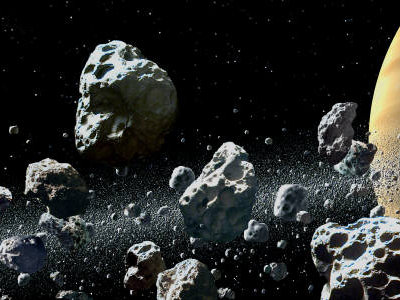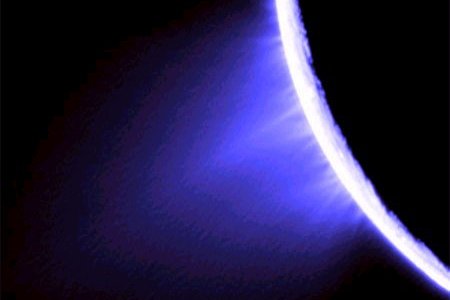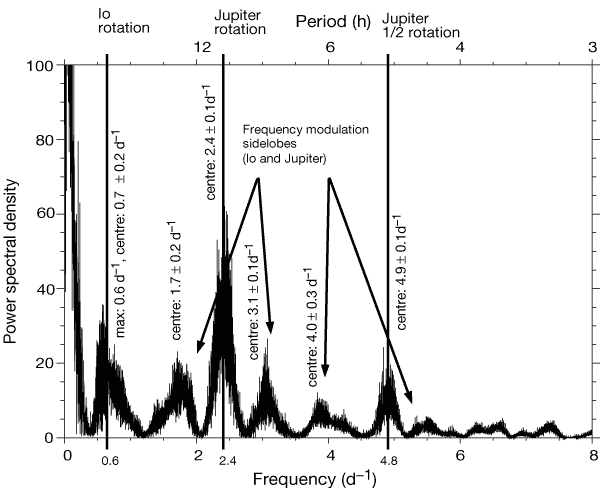| The immediate environment of a massive body is another place
for collection of dust.
The most obvious example are the planetary rings around the
gas giants, like in the case of Saturn.
They are distinguished in two classes: massive rings and dusty rings.
In the massive rings, myriads of boulders turn on almost circular
orbits around their host planet;
they are solely gravitation-driven.
The dusty rings exhibit different properties, since they consist
of nano- and microsized particles;
these are rather radiation-driven and have estimated lifetimes
of a few hundred years, meaning that the material must be replenished.
|

|
| Saturn's moon Enceladus is a source of the so-called E-ring.
This geologically active moon blows off tiny crystals of ice
and dust from its South pole.
A detailed analysation gave evidence for a liquid water ocean
beneath the surface.
Water drops find their way out through tectonic ridges and are
ejected fountain-like into space and permanently feed that E-ring.
Furthermore, there exists another dust belt far outside at the
orbit of Phoebe indicating its relationship to that satellite.
The particles of this ring are presumed to have originated from
micrometeoroid impacts on Phoebe.
|

|
| A newly detected phenomenon are planetary dust streams.
Both giants, Jupiter and Saturn, were identified as sources of
dust streams with speeds above 100 km/s.
The streams are evidence of a strong coupling of dust particles
to the magnetospheric environment.
The particles are released by the active moons Io and
Enceladus, respectively, and get charged in the plasma.
Then they are accelerated in the magnetic field and taken far
to the interplanetary space.
|

|







